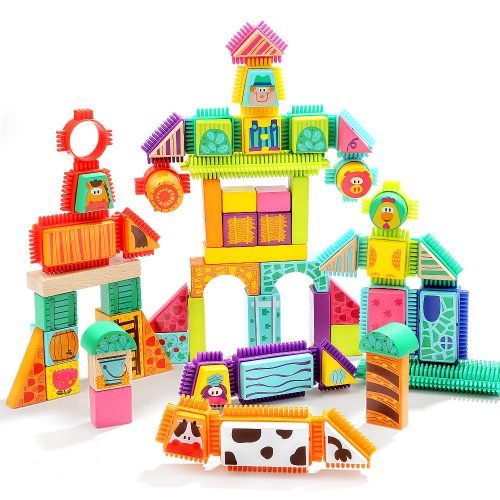Both silicone and wooden toys have their own advantages and disadvantages, making it difficult to definitively say which one is “better.” The best choice ultimately depends on your individual priorities and your child’s needs. Here’s a comparison to help you decide:
Silicone Toys:
Pros:
- Safe and non-toxic: Made from food-grade silicone, free from harmful chemicals like BPA, phthalates, and PVC.
- Soft and flexible: Gentle on gums and teeth, ideal for teething babies.
- Easy to clean: Dishwasher safe and resistant to bacteria growth.
- Lightweight and portable: Perfect for travel or on-the-go play.
- Variety of shapes and textures: Offer sensory stimulation and promote development of motor skills.
Cons:
- Limited open-ended play: Often have specific functions or features, restricting imaginative play.
- Not as aesthetically pleasing: Some might find the bright colors and cartoonish designs less appealing.
- Potentially less durable: Can tear or break if chewed aggressively.
- Environmental impact: Production and disposal might raise concerns for some.
Wooden Toys:
Pros:
- Open-ended play: Encourage creativity and imagination without pre-set functions.
- Natural and sustainable: Made from renewable resources, aligning with eco-conscious values.
- Durable and long-lasting: Can be passed down through generations with proper care.
- Warm and aesthetically pleasing: Many appreciate the natural beauty and classic look.
- Sensory experience: Offer unique textures and warmth for tactile exploration.
Cons:
- Potential safety hazards: Can splinter or crack if damaged, posing choking hazards.
- Requires maintenance: Some woods need occasional oiling or waxing.
- Can be more expensive: Generally cost more than silicone toys.
- Not as soft for teething: Less ideal for babies who chew aggressively.
Additional factors to consider:
- Your child’s age and development: Younger children might benefit from soft and chewable silicone toys, while older children might appreciate the open-ended nature of wooden toys.
- Your parenting style and values: Do you prioritize natural materials and open-ended play, or are safety and ease of cleaning more important?
- Budget and environmental concerns: Wooden toys are generally more expensive, while silicone might raise concerns about plastic production and disposal.
Ultimately, there’s no single “better” choice. You can even offer a variety of both silicone and wooden toys to cater to different needs and preferences. Remember, the best toys are those that are safe, stimulate learning and development, and spark joy in your child.







